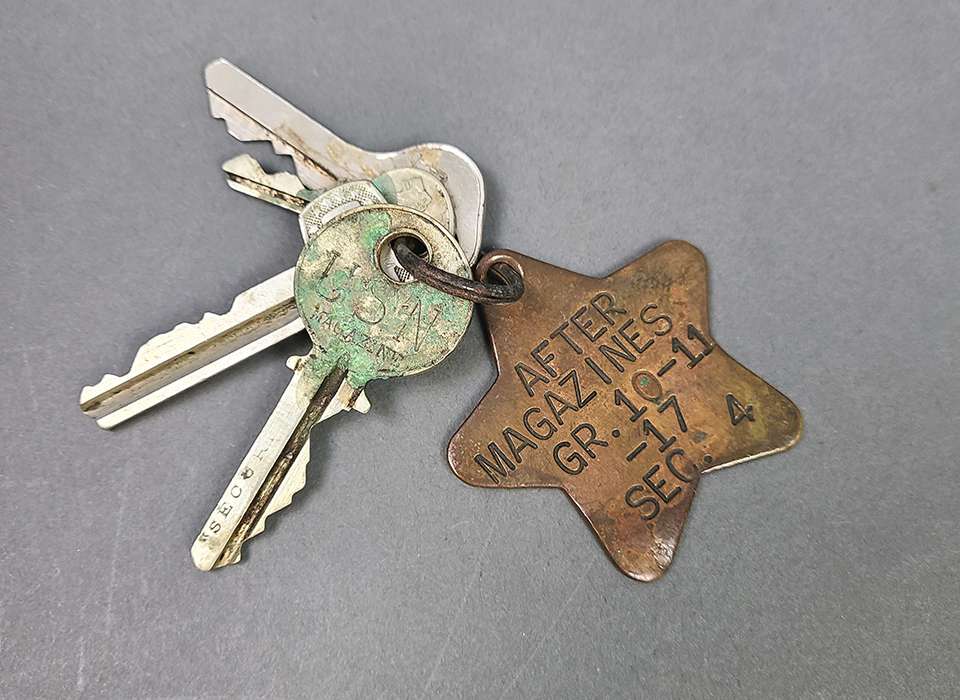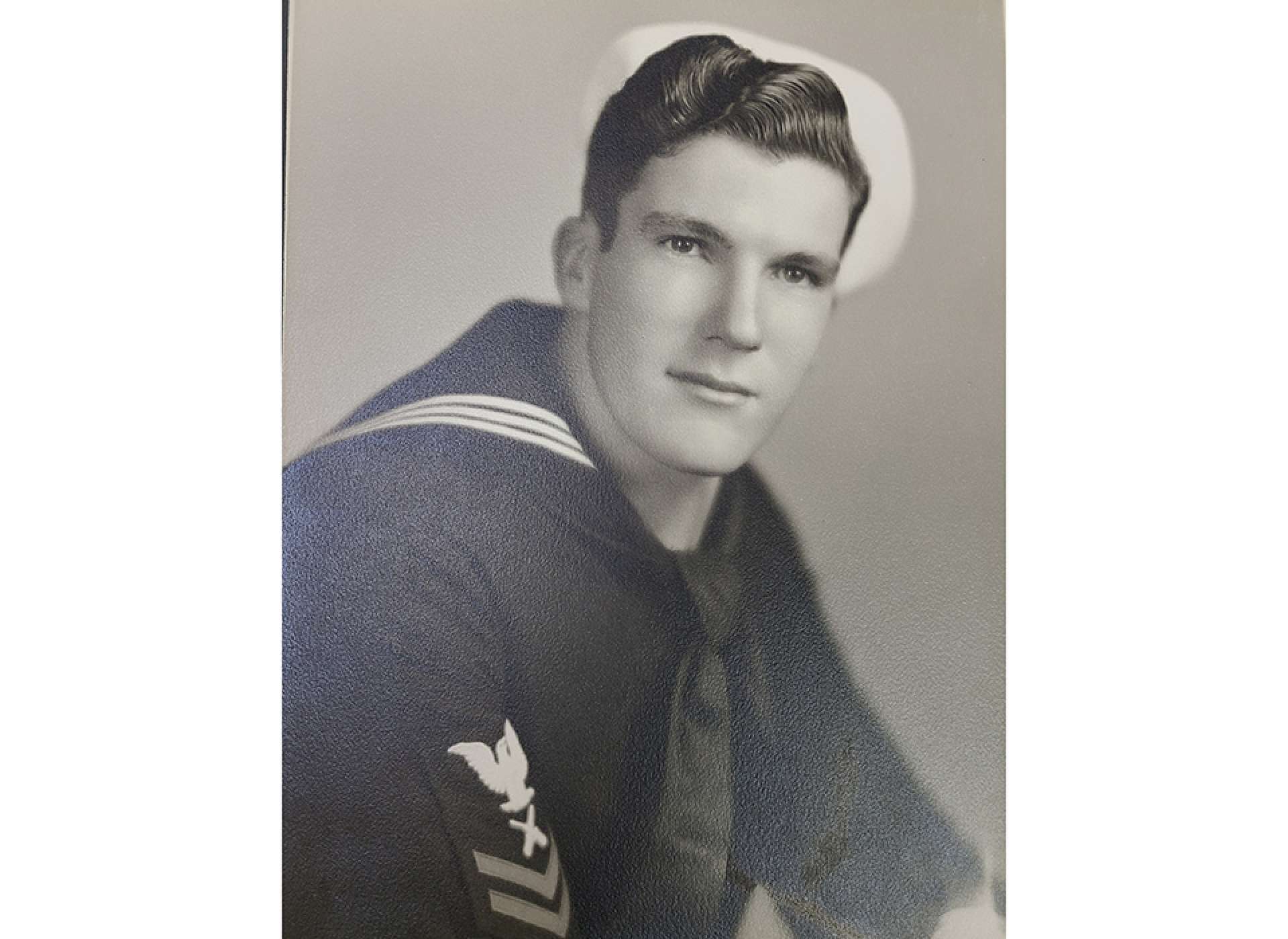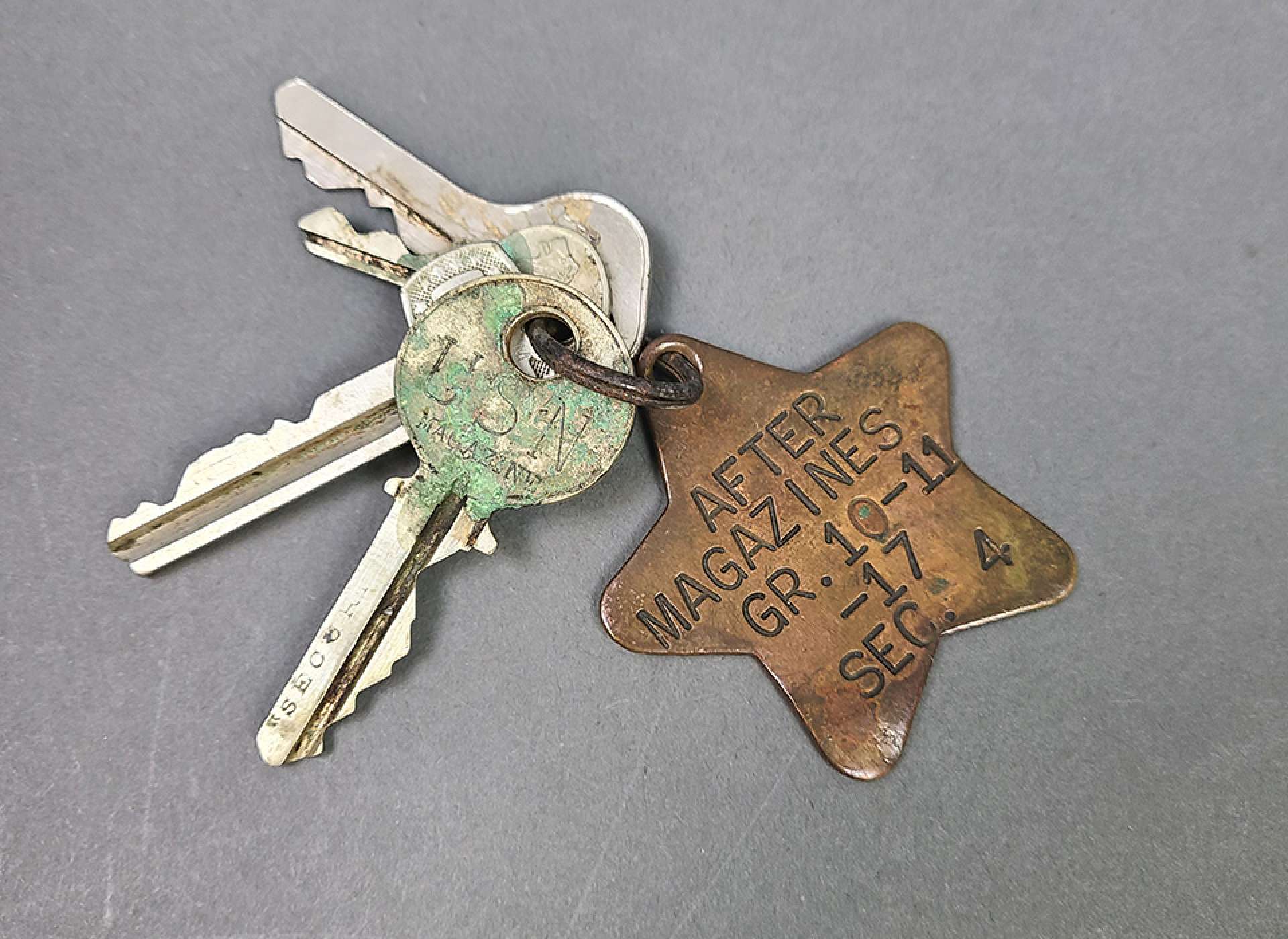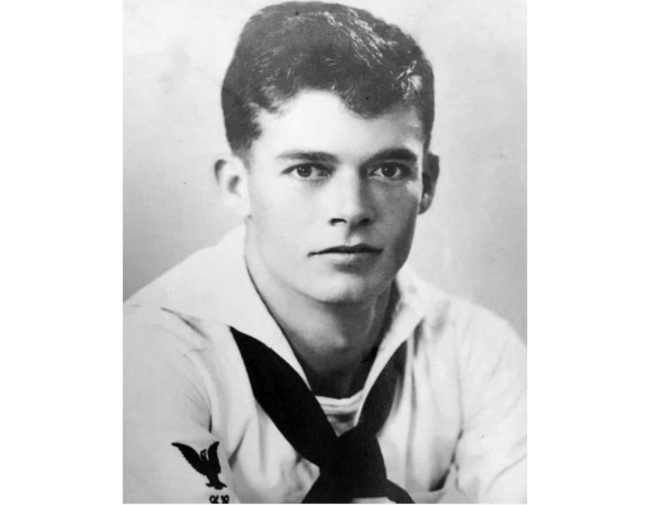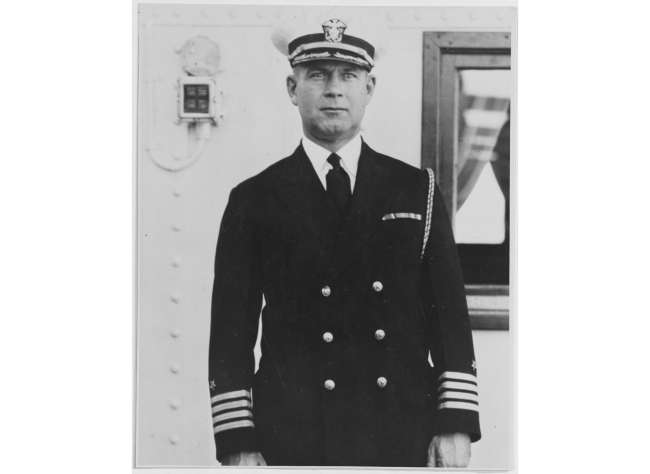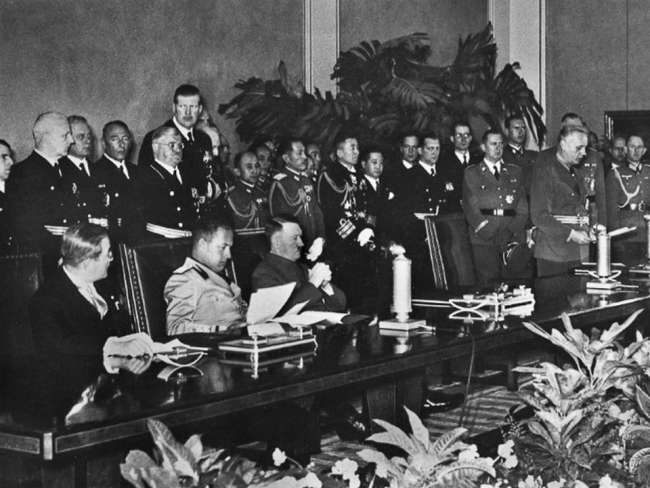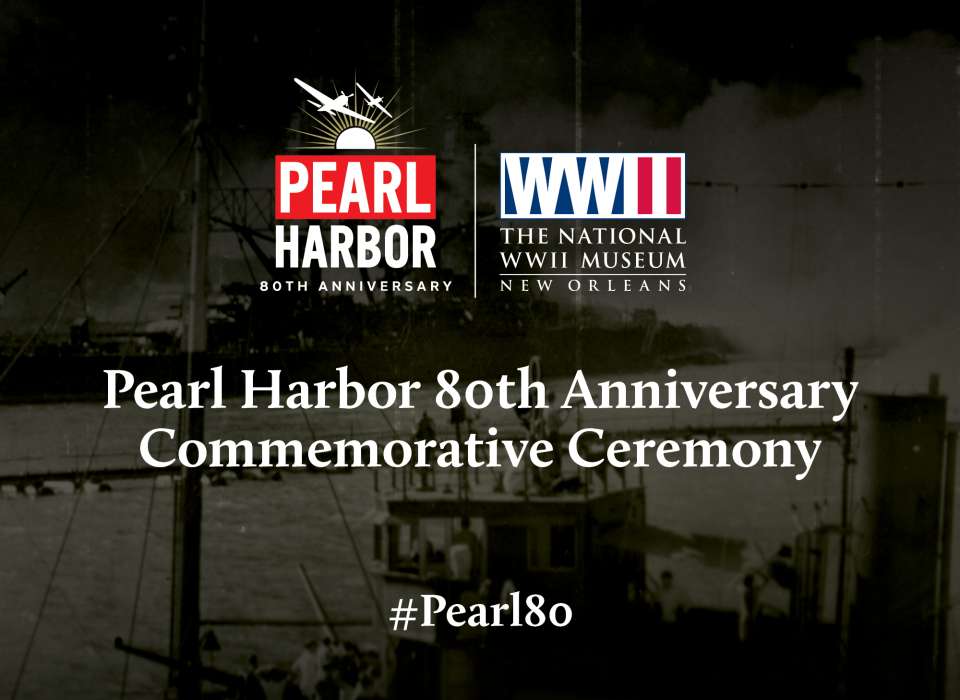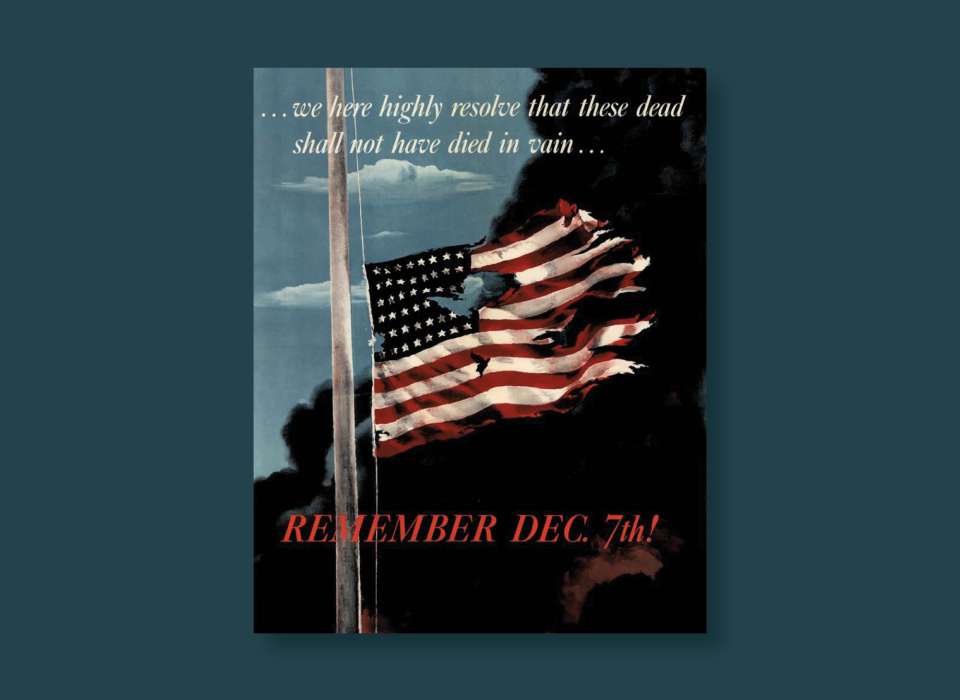On the morning of December 7, 1941, Seaman First Class Paul G. Williams was up early. As a seaman who was striking for a Gunner’s Mate rating, Williams was low on the pecking order in the gunnery department of the USS West Virginia (BB-48) and had pulled the Sunday morning duty to check the magazines.
Work never stops on a Navy ship, even one comfortably sitting in port on a Sunday morning. Sailors, the life blood of any ship, are always moving around with a never-ending to-do list. Williams’ chore for that morning involved entering the after main battery magazines and checking temperatures. To perform this task, Williams retrieved the keys for the after-magazine group and descended deep into the West Virginia. Fortunately for Williams, fate had placed him in the most protected compartments of the ship during the opening moments of the worst surprise attack in US Navy history.
-

Portrait of Paul G. Williams during his Navy service after the attack on Pearl Harbor. Williams enlisted in the US Navy on December 8, 1939, and remained in service until 1970. Gift In Memory of Cathrine William Thorpe, 2021.135
-

Keys for the after-magazine group of USS West Virginia (BB-48). In the opening moments of the attack on Pearl Harbor, Seaman First Class Paul G. Williams used these keys to access the after magazines of the USS West Virginia in order to check the temperatures. Deep below decks when the first torpedoes hit, Williams first secured then flooded the magazines before following the abandon ship order. Gift In Memory of Cathrine William Thorpe, 2021.135
Williams was an immediate beneficiary of an armored concept called “All or Nothing.” This was a principle of battleship design that was first implemented in the US Navy with the USS Nevada (BB-36) in 1912. The concept revolved around the layout of armored protection in relation to systems that were deemed most important. Up to that point, armor on ships tended to be scattered around the hull, protecting areas of varying importance with armor of variable thicknesses. As naval guns became more powerful, ship designers had a harder time adequately protecting every part of the ship in such a scattered manner.
“All or nothing” relied on a “citadel” of armor. Rather than have scattered armored sections, the total weight of armor could be concentrated in one part of the ship. Systems would either be protected by this heavy belt of armor, or they would lay outside it with no protection. As naval weapons advanced beyond direct gunfire, new elements of this “citadel” were added to designs. The two most important were torpedo blisters and bulkheads (sacrificial hull sections that absorbed the impact of the torpedo) and deck armor that protected against aerial bombs. Generally, these armored sections spanned between the forward turret and after turret of any battleship.
Although there were many essential systems protected by the citadel such as the engines, damage control, crew spaces, wheelhouse, and communications, the very heart of this entire system of protective bulkheads and armor were the ship’s magazines. As Seaman First Class Paul G. Williams descended into the after magazines of the West Virginia, he was separated from the outside world by five inches of cumulative deck armor, a double hull below, torpedo bulkheads to the sides, and solid steel belt armor that was 13.5 inches thick.
By 1941, Paul G. Williams was a professional sailor who intended to make the navy his career. In fact, December 8, 1941, would mark the beginning of his third year in the service. Williams had been assigned to the USS West Virginia right out of bootcamp in February 1940. He had moved with the ship out to Hawaii in the spring of 1940. On December 7, 1941, Williams was an experienced and trained member of a proud crew when he was down in the after magazines and heard a “thump.” Deep in the armored hull of the USS West Virginia Williams first thought another ship had collided with them. His training kicked in and he immediately dogged down the hatches, closing and locking them. In the case of a collision, hull integrity is important—all hatches are closed to keep any water intrusion limited. After closing the hatches, Williams climbed up to the third deck to await orders.
In reality, the thump he heard was approximately 500 pounds of explosives carried by a Japanese Type 91 aerial torpedo detonating against the hull of the West Virginia. Just as Williams arrived on the third deck, the second of an estimated seven torpedoes that eventually hit the USS West Virginia impacted the hull. A nearby sailor shouted “The Japs[sic] are attacking us!” Seconds later torpedoes number three and four impacted the hull, general quarters sounded, then a bomb hit and knocked out the lights.
For Williams, the benefit of being in the heavily armored section of the USS West Virginia was that he easily survived four torpedoes and one bomb hit. The down side was the sensory deprivation caused by being that deep in the ship. He could not see top-side and he could not hear the shouts of the crew members in other parts of the ship. Williams’ war had started in a steel compartment and he had no idea what was going on.
To make matters worse, the ship was quickly beginning to list to port as the battered hull let in the water of Pearl Harbor. Once again, training kicked in. Hearing general quarters, Williams knew he had the keys to the magazines and he was on duty. Despite the torpedo hits, lights going out, and the list, he dutifully went below to open up the magazines. At general quarters the ship needed to be ready to fight, and a ship with locked magazines could not fight.
As Williams descended to unlock the magazines the list began to dramatically increase, approaching 25 degrees and heading towards rollover. There was no way Williams could have fully understood the situation until he heard the words abandon ship. For the third time that morning, Williams made the best decision for the ship by flooding the magazine spaces he was responsible for before escaping the sinking hull. Flooding a magazine is a last resort for a ship in a fight. Due to the massive amount of powder and shells, if a magazine is breached by enemy fire, or actual shipboard fire, the detonation could rip the entire ship to shreds. But if a magazine is flooded, the powder and shells are full of water and no longer accessible or usable if the ship needs to fight.
By now, Williams knew the ship was sinking and flooding the magazines rendered them as safe as possible from any secondary explosion as the ship settled on the bottom. After flooding the magazines, Williams climbed up the tilting compartments, emerging on the quarterdeck. Amazingly enough, what felt like an eternity to Williams from the first torpedo hit, to escaping the hull of the sinking USS West Virginia, had in fact only taken 10 minutes.
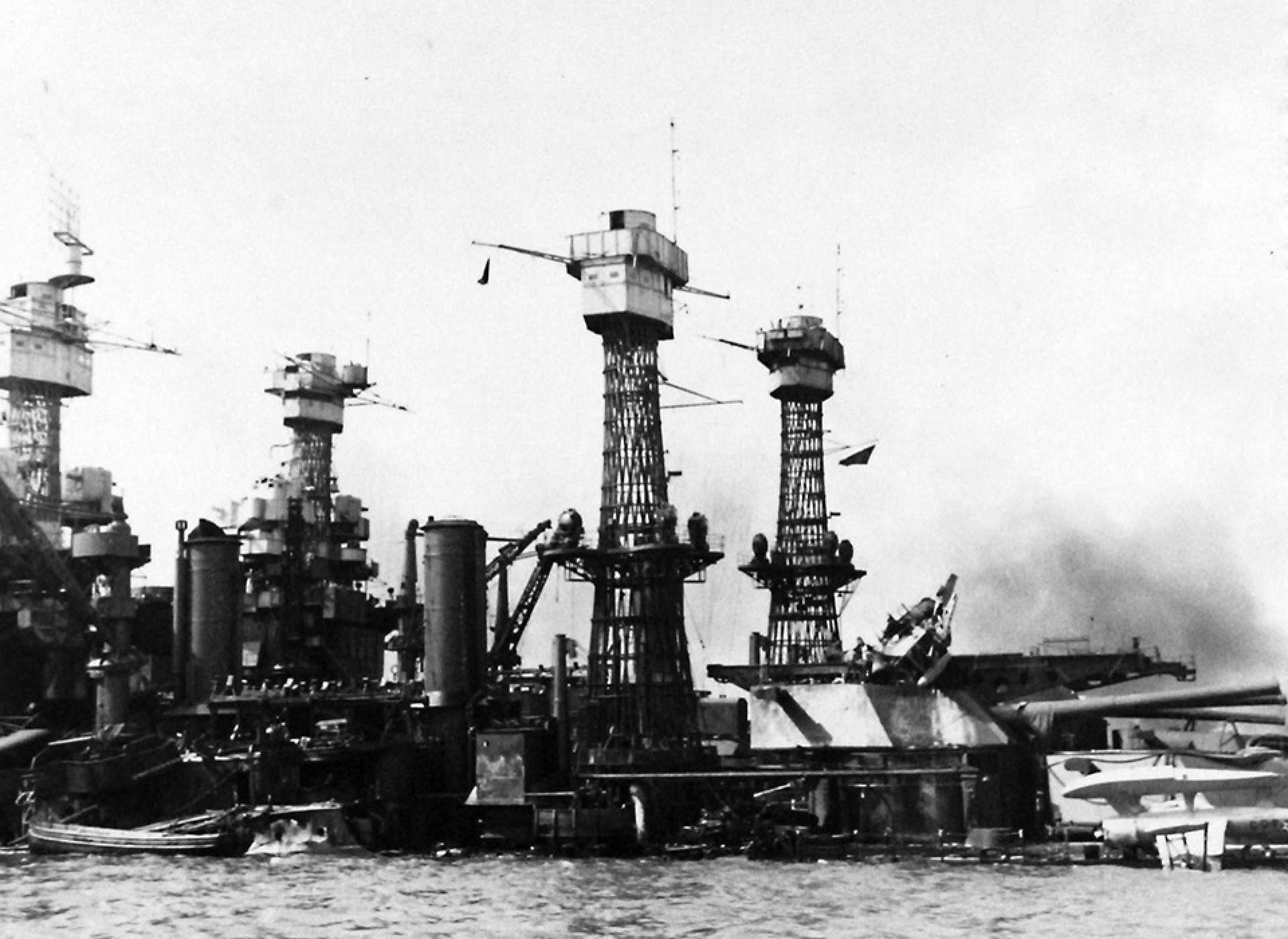
USS West Virginia (BB-48) settled on the bottom after the attack on Pearl Harbor. The magazine group that Paul G. Williams was checking when the first torpedo struck is located below the turret and cage mast at the center of the picture. Williams had to climb up three decks as the ship was listing and sinking in order to escape. Image courtesy of the Naval History and Heritage Command.
After emerging on the deck, Williams’ day was only beginning. He remained aboard ship, helping wounded men and dodging strafing attacks until the final abandon ship order was given. Williams slid across the mooring lines to the USS Tennessee (BB-43) gathering with a number of West Virginia men until the second attack began and they moved to Ford Island.
Before long, the executive officer of USS West Virginia gathered a group that Williams joined to return to the ship to fight the fires. After seeing the extent of damage to his ship, Williams volunteered for duty on any ship that needed gunner’s mates. He waited eight days, performing various tasks around Ford Island, before being assigned to the USS Chester (CL-27).
Many sailors of ships sunk at Pearl Harbor survived with only the clothing on their backs. For most of them, their personal gear was burned or underwater. Paul G. Williams found himself in a very similar situation, however, he had a unique souvenir. After flooding the magazines, Williams put the keys in his pocket and forgot about his morning duties. After the action ended, Williams found that he still had the keys from the after-magazine group, a remarkable artifact from a hectic morning.
Joshua Schick
Cite this article:
MLA Citation:
APA Citation:
Chicago Style Citation:
